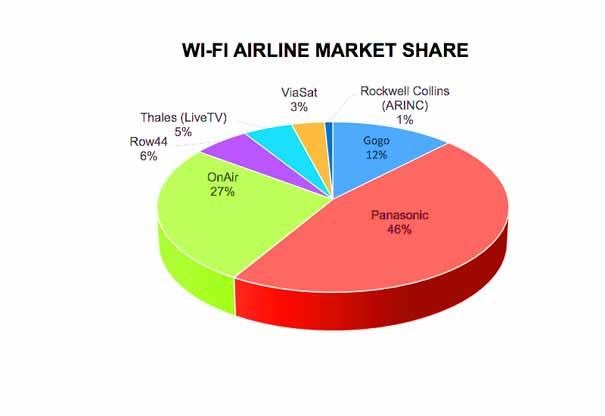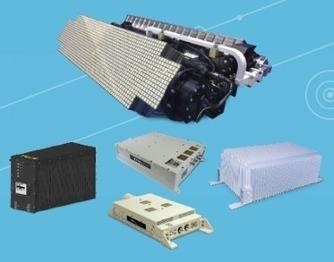I suggest that you familiarize yourself with the previously posted materials on the Starlink (SL)
project : Part 1. The birth of the project ‣ Part 2. SL network ‣ Part 3. Ground complex ‣ Part 4. Subscriber terminal ‣ Part 5. State of the SL grouping and closed beta testing ‣ Part 6. Beta-testing and service for customers ‣ Part 7. Bandwidth SL and RDOF program network ‣ Part 8. Installation and inclusion of subscriber terminal ‣ Part 9 service in markets outside the US ‣ Part 10. SL and the Pentagon ‣ Part 11. SL and astronomers ‣ Part 12. Space debris problems‣ Part 13. The satellite network latency and access to radio spectrum ‣ Part 14. The inter-satellite communication channels ‣ Part 15 Rules of Service ‣ Part 16. SL and weather ‣ Part 17. Second generation SL
Starlink in the COTM market
Organization of communication on mobile objects is a generally accepted designation of this direction in satellite communication COTM (Communication On The Move), covering cars and other vehicles, trains, ships and helicopters / airplanes.
The main and most advanced market is by far the maritime with two main separate markets for cruise ships and cargo / merchant ships.

Here is a detailed picture with money and segment breakdown.

The second most important market is the aviation market or IFC (InFlightConnectivity).
Here is an estimate of the market (equipment, services of broadband internet providers and content providers) in the US $ Billion of North America (essentially the US and Canada)

Equipping trains with satellite communications are rather isolated exceptions, as well as civil / commercial vehicles.
The main requirements of the Customer for the Operators of IFC and maritime broadband are the global coverage and the possibility of one time shopping, that is, receiving services from one provider regardless of the region where the ship or plane is located.
At this stage, Starlink does not meet these requirements for several reasons: there is no coverage above 53 degrees, there is no coverage in the oceans, there is no service (although there is coverage) in the coastal zone of many countries of the world. That is, while Starlink is suitable for inland waterways (rivers, canals, lakes) and coastal navigation along the US coasts. And also air transportation within the country.
We note right away that these are, nevertheless, very large markets with a potential of tens of thousands of terminals.
It should also be noted that if the installation of a Starlink terminal on a watercraft is almost completely in the hands and will of the owner of the boat (in any case, the Starlink terminal will not replace the mandatory radio equipment required according to the register and the requirements of the local Water Authority), then the equipment of an airplane or other aircraft for carriage of passengers requires certification of its manufacturer. For Boeing-737 / Airbus-320 aircrafts, it is at least 500..600 thousand US dollars. Therefore, the number of IFC providers who must first certify their equipment for installation on a specific type of aircraft is much smaller than the number of satellite broadband Internet providers for ships:


A serial Starlink terminal (model UTA-201) will be used on the platform, possibly with software modification in the NCC and in the terminal itself. Formally, there are no physical restrictions for the terminal for tracking satellites while in motion.
On November 6, 2020, SpaceX applied to the FCC for permission to turn on and operate Starlink terminals on board 5 aircraft at the airport (apparently initial tests and tests for electromagnetic compatibility with air navigation equipment of airports) and to operate in flight over the United States (including their territories and territorial water). The planes, judging by the information, are private business jets of the Golfstream type.

On an airplane will be used the same electronic module serial Starlink antenna terminal, but in a different form factor, it is possible to rework the software in the network control center and the terminal. Formally, there are no physical restrictions for the terminal for tracking satellites while in motion, since the speed of the aircraft is much less than the speed of the satellite.
In accordance with this, it becomes clear that SpaceX is seriously considering the entry of the Starlink service into these markets, while it can be noted that due to the dimensions of existing systems for satellite communications (gyro-stabilized antennas in a radom with a diameter of 0.8 ... 1.5 meters) or extremely expensive low-profile terminals for installation on aircraft, the chances of success for Starlink service are very high.

The photo set Gilat Satellite manufacturing terminal for installation on aircraft
Offer Starlink is unique and at the price and service options for small and medium-sized yachts and other gadgets for business aircraft with less than 50 passengers.
Conclusion : Starlink is well positioned to become a leading provider of broadband internet for ships and aircraft once fully deployed in Generation 2, but that is still to come ...